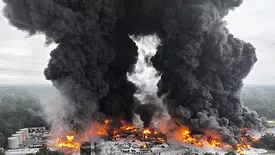Home » Keywords: » water testing
Items Tagged with 'water testing'
ARTICLES
Partnership to accelerate water testing for utilities
Read More
EPA Ramps Up Water Testing in Wake of Smitty’s Supply Fire in Louisiana
So begins a series of expanded sampling operations that will continue over the next five weeks
Read More
Earth’s Mantle Gases Found in Groundwater Far from Volcanic Zones
A new study from The University of Manchester revealed interesting findings
Read More
Chicago State University and the EPA Look to the Future
The unique partnership is all about giving students real-world experience, mentorship, and career support
Read More
EPA Implements Free PFAS Testing for Small-Community Water Suppliers
Scientists urges EPA to test drinking water for other emerging contaminants
Read More
Driller Exclusive
The Importance of PFAS Research and Substantiating Data
Lead researcher says goal is to produce a portable device that conducts large-scale screening
Read More
News
Private Wells Near Army Bases to be Tested for PFAS
Nine bases identified as ‘priority installations’ for PFAS to have leached offsite
Read More
News
Hastings Well Shut Down After High Nitrate Levels Detected
The City of Hastings takes action after detecting nitrate levels above the maximum contaminant level, reserving the well for emergency use only
Read More
Dig deeper into the drilling and water supply industry!
Build your knowledge with The Driller, covering the people, equipment and technologies across drilling markets.
SIGN UP NOWCopyright ©2025. All Rights Reserved BNP Media.
Design, CMS, Hosting & Web Development :: ePublishing
.webp?height=168&t=1762313000&width=275)




.webp?height=168&t=1734839470&width=275)




